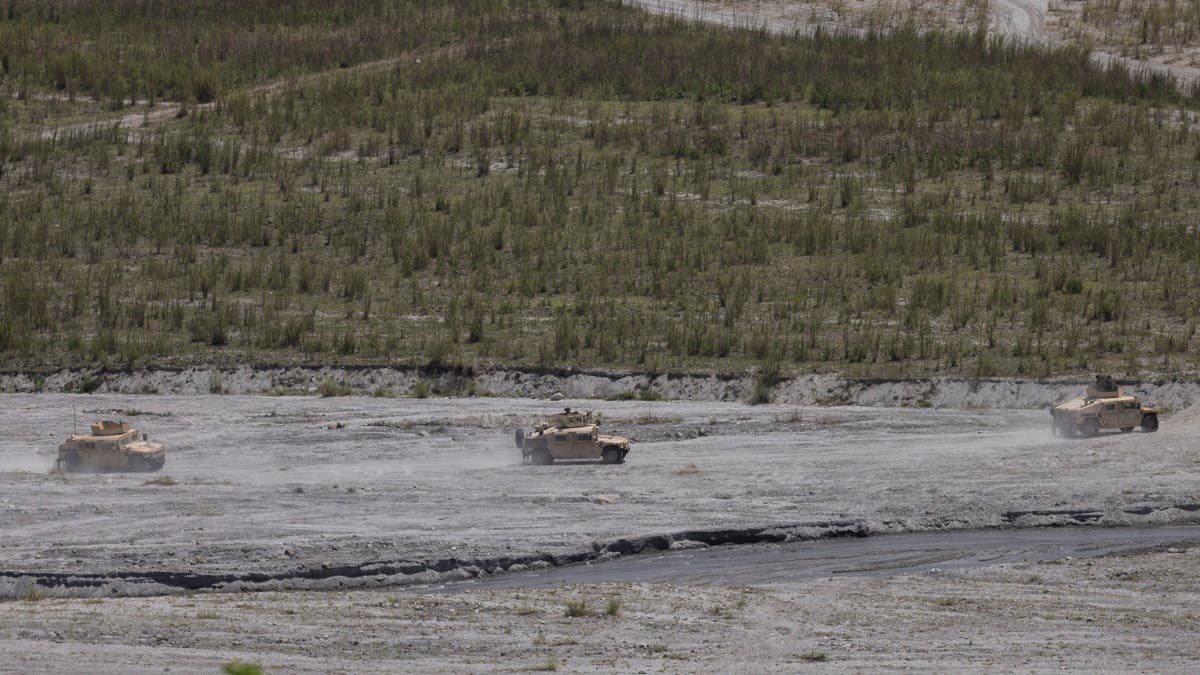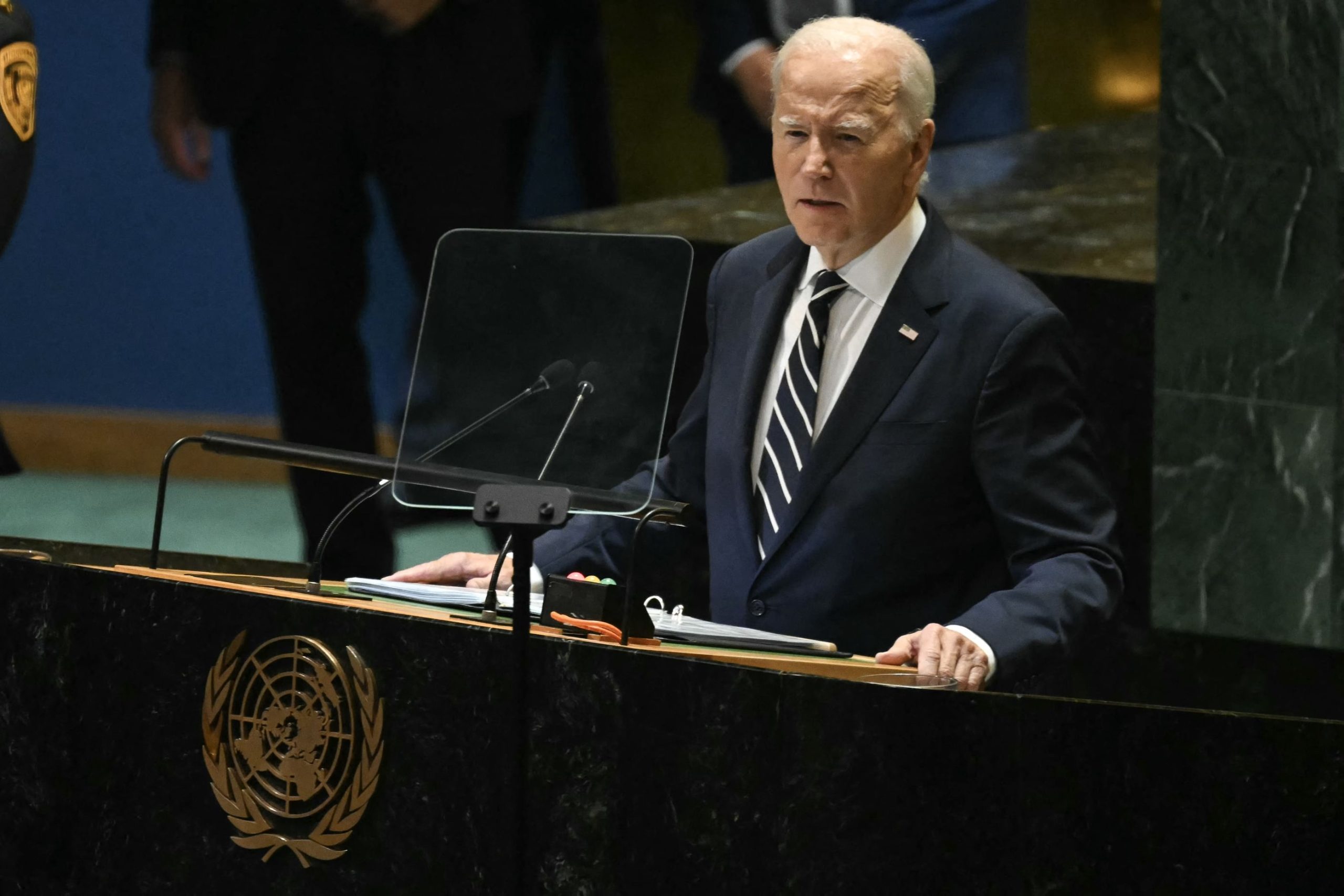With assault weapons ready, US and Filipino marines sprang from amphibious vehicles and transport helicopters to defend an island from potential aggressors in a war exercise and show of American firepower staged on Thursday in the northern Philippines.
The exercise — held in far-flung Claveria town across the sea from China and Taiwan — fits into a strategy unveiled in February by the Biden administration to considerably broaden US engagement in the Indo-Pacific region by strengthening a web of security alliances and partnerships, with an emphasis on addressing China’s growing influence and ambitions.
For the latest headlines, follow our Google News channel online or via the app.
Watched by invited journalists, the mock combat ended with the allied forces successfully securing the island before it could be seized by invaders in a clear warning to would-be aggressors in a region with multiple trouble spots.
“We should indeed improve our preparation for external aggression,” said Philippine regional military commander Maj. Gen. Lawrence Mina, who spoke with reporters as the marines took combat positions on the sandy beach and a narrow trench under the scorching summer heat.
“It’s high time because we never know if we’ll get embroiled in the unfolding events that we’re hearing in the international scene,” he said. “At least we’re ready.”
The beach landing and coastal defense maneuvers were part of one of the largest combat exercises in years between the longtime treaty allies that began Monday and would include live-fire drills, aircraft assaults, urban warfare and civic projects mostly in northern and the western Philippines, which faces the disputed South China Sea.
Col. Timothy Brady Jr., who heads the US 3rd Marine Littoral Regiment, said he was “very pleased” with the outcome of the mock beach maneuvers, which started in the nearby coastal town of Aparri.
“Certainly, the objective of what we’re doing is demonstrating the strength of the alliance as well as the commitment to regional security,” Brady said.
Called Balikatan — Tagalog for shoulder-to-shoulder — the annual exercises will run up to April 8 with nearly 9,000 navy, marines, air force and army troops, including 5,100 American military personnel, to strengthen their joint fighting capabilities and readiness “for real-world challenges,” according to US and Philippine military officials.
First staged in 1991, the Balikatan exercises are anchored on the 1951 Mutual Defense Treaty, which commits the United States and the Philippines to come to each other’s aid in case of an attack.
When President Rodrigo Duterte took office in 2016, he threatened to scale back US military activities in the country as he nurtured closer ties with China and Russia but walked back on many of his threats, including a move to abrogate a defense pact that would have restricted American forces from largescale combat exercises in the country.
China’s “coercion and aggression spans the globe, but it is most acute in the Indo-Pacific,” the strategy paper said, citing Beijing’s “economic coercion” of Australia, the intensifying pressure on Taiwan, bullying of neighbors in the East and South China seas and the conflict along the Line of Actual Control with India.
“Integrated deterrence will be the cornerstone of our approach,” the strategy paper said. “We will more tightly integrate our efforts across warfighting domains and the spectrum of conflict to ensure that the United States, alongside our allies and partners, can dissuade or defeat aggression in any form or domain.”
Last week, US Indo-Pacific commander Adm. John C. Aquilino said China has fully militarized at least three of several islands it built in the South China Sea, arming them with anti-ship and anti-aircraft missile systems, laser and jamming equipment, and military aircraft in an increasingly aggressive move that threatens all nations operating in the disputed waters.
Beijing maintains its military profile is purely defensive, aimed at protecting what it says are its sovereign rights. But after years of increased military spending, China now boasts the world’s second-largest defense budget after the US and is rapidly modernizing its force with weapons systems.
China is also expanding its nuclear arsenal, with the Pentagon saying Beijing is on track to field at least 1,000 warheads by 2030 — five times the current number.
Philippine marine Col. Romulo Quemado said the Balikatan exercises were complementing crucial efforts to bolster his country’s coastal defense, including the acquisition of armored amphibious vehicles, but were not meant to antagonize any particular country.
“Deterrence is all about perception,” Quemado said.
Read more:
Philippines reports ‘close distance maneuvering’ of Chinese ship in South China Sea
US to hold largest military drill in decades with Philippines
US threat to sanction China is spooking other Asian nations

 World3 years ago
World3 years ago
 World3 years ago
World3 years ago
 Business1 year ago
Business1 year ago
 Entertainment7 years ago
Entertainment7 years ago
 World7 years ago
World7 years ago
 Entertainment7 years ago
Entertainment7 years ago






